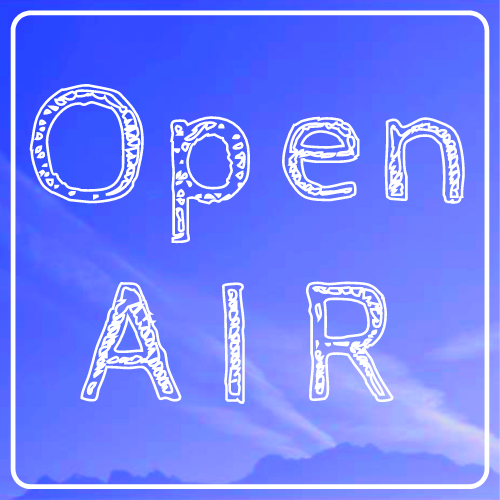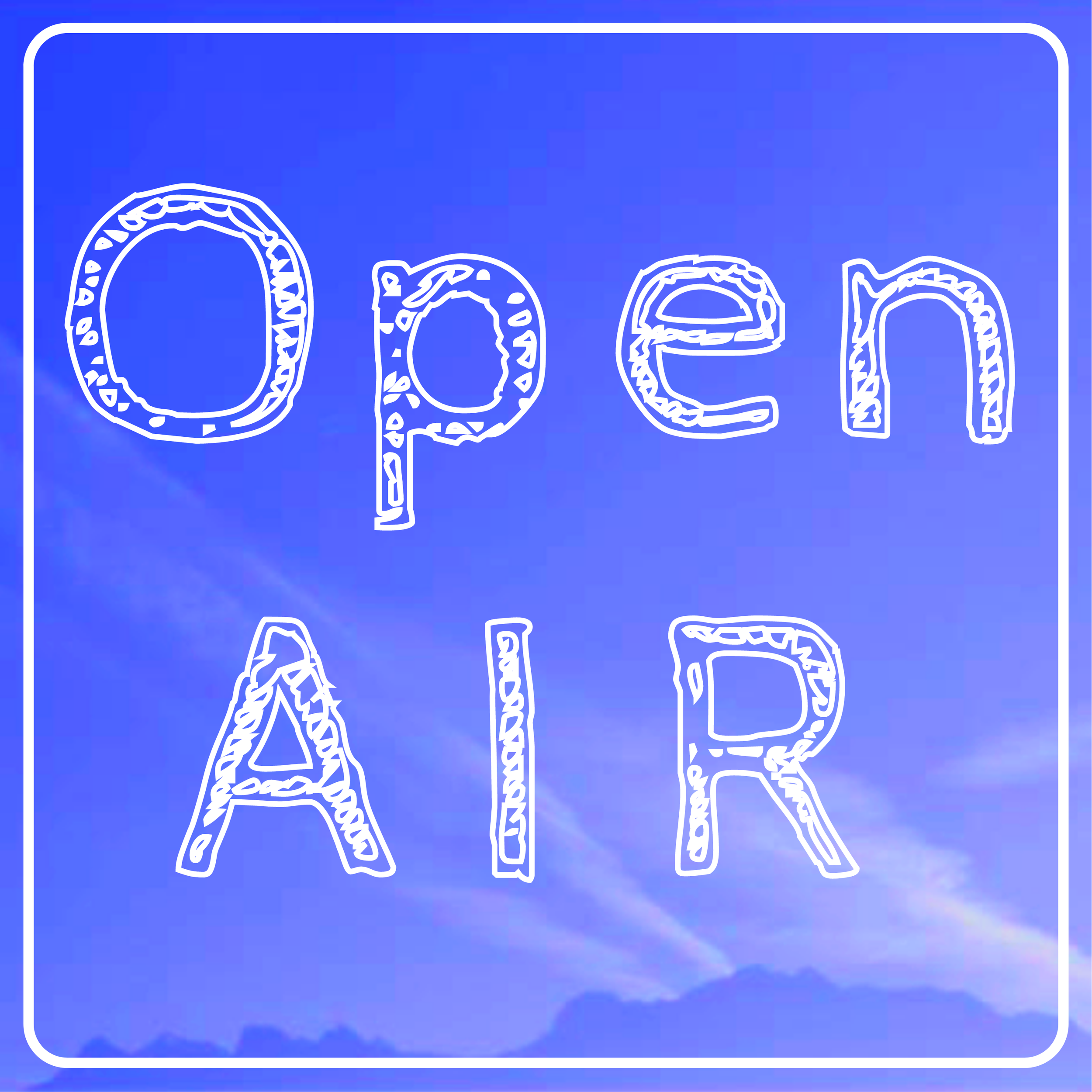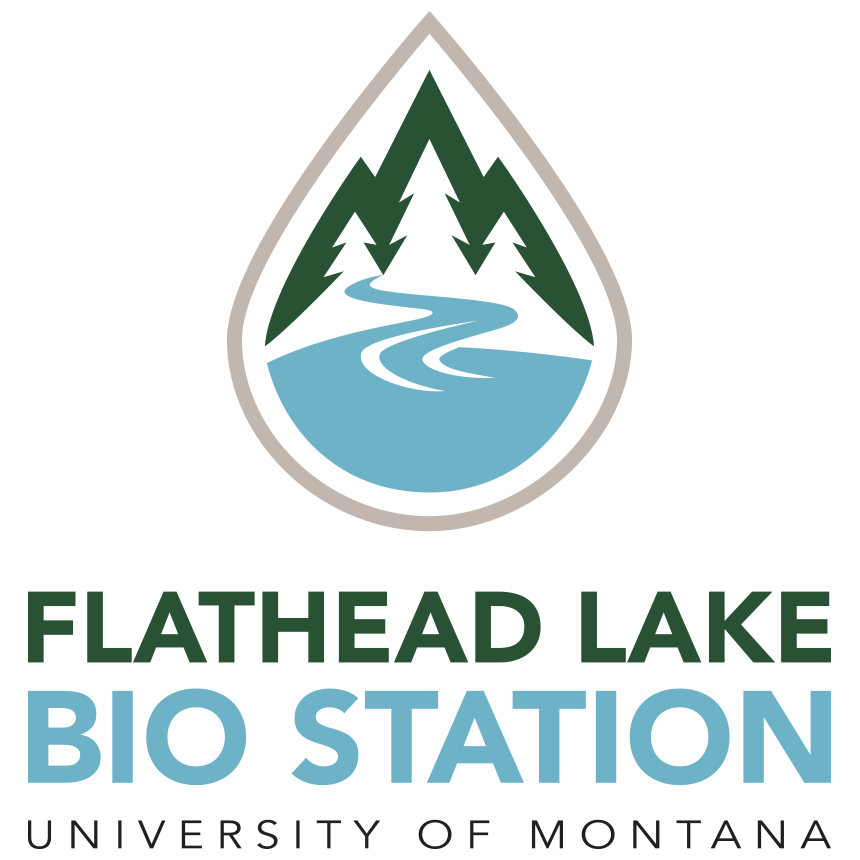Jasmine Gutbrod: SPIRIT OF EXPLORATION
“The most compelling part of making work in 3D for me is the potential for physical interaction. I want to make things that people can hold, rub against, climb on, and walk around. For me, the invitation to touch creates an intimate and memorable experience.”
Fall 2023 Artist-in-Residence at Flathead Lake Biological Station
Jasmine next to her outdoor installation of “They Fly Like Tiny Angels”
How would you describe your work?
Drawing is a daily habit for me and an important part of how I document my environment. My sketchbook is inconsistent in medium, style, and subject. This used to bother me, and now I don’t take it so seriously and try to be messier. I draw birds, test out watercolors, and plan out ideas for larger objects to make. The most compelling part of making work in 3D for me is the potential for physical interaction. I want to make things that people can hold, rub against, climb on, and walk around. For me, the invitation to touch creates an intimate and memorable experience. When considering what to make out of the driftwood at Flathead Lake, I was thinking about tools I could make to encourage people to reach a new vantage point. I have trouble painting sunsets because it never looks as stunning as the real thing. But I can make a ladder to peer through the trees so maybe I can watch it longer.
“Driftwood Ladder” outdoor installation at Flathead Lake Biological Station by Jasmine
What was your research process during your Flathead Lake Biological Station residency?
I came to Flathead Lake Biological Station with some ideas but knew I would change my mind once my research and site immersion took hold. I was immediately drawn to the many scientific processes being conducted and wanted to learn as much as I could about the ecological history of the place. Gathering information was an important part of my initial art-making process. I brought trail cameras with me from home to learn about our animal neighbors living with us during the residency and would accompany scientists to collect lake plankton and band Northern saw-whet owls late at night. The diversity of study and research practice inspired me to respond with an interdisciplinary approach to my work. I wanted to include material sourced from the site, in this case, driftwood and recycled screen, and create objects that reflected the spirit of exploration I was so preoccupied with.
One of the best textures found on driftwood is made by bark beetles, who leave lovely alien pathways carved into wood branches and bark. In an effort to celebrate these insect petroglyphs, I used the wood pieces as block prints, coating the surface with ink and rolling the whole branch onto paper to preserve the lines. This process was quick and changed my role from being the sole creator of a piece to being a facilitator who translates the habits of another organism.
Notes and sketches created by Jasmine
Driftwood collected collected from Flathead Lake Biological Station
What are you up to now (post Open AIR)?
I am excited about incorporating more responsive (perhaps temporary) processes in my work. Coming from a design background, I often struggle with wanting to perfect a completed object- so much time goes into the design phase that I need to feel very ready if I decide to fabricate the object and bring it to life. My time with Open AIR was valuable because I was able to take risks and explore ideas in the moment without worrying about the outcome. This is an experience I hope to bring to future projects. I have found that 3D printing in clay provides me with a satisfying balance of precision and imprecision. The vessels I design digitally cannot fully predict how the clay will extrude, coil, and loop as it exits the machine in real-time. I prod and fix and edit parts as they are printing, resulting in a process that is equally robotic and made by hand. I’m interested in how this contrast between what is seemingly natural and unnatural occurs at different scales and in different aspects of my life. This year, I’m thinking about ceramic vessels more broadly to include lighting. I’m playing with 3D-printed porcelain textures that filter light and cast mysterious shadows on the wall.
3D printed ceramics by Jasmine
Design sketch created by Jasmine
How was your experience as an Open AIR Artist-in-Residence?
Walking along the trails, I followed deer tracks made fresh each morning and passed the Ponderosa pine with the deep claw marks from bears climbing up. I took stock of the abundant driftwood, weathered with a silver sheen, and watched a rainstorm pour on the trees across the lake while the sky and I remained dry.
Artwork create by Jasmine during Artist-in-Residence at FLBS
“The Belly of the Beast” taken by Jasmine during her Artist-in-Residency
Any new projects in the works?
I’ve been experimenting with film photography this past year, and the rolls I shot during the OpenAir residency were the first ones I’ve developed. “They Fly Like Tiny Angels” and “Driftwood Ladder” were part of an outdoor installation at Flathead Lake Biological Station. Painted on upcycled window screens, owls take flight in the forest, sometimes visible and sometimes invisible. I built the driftwood ladders and sprinkled them throughout the site, offering different vantage points for those looking to meander off the trail. After spending time banding and releasing owls with a scientist from the Owl Research Institute, I wanted to capture the breathlessness I felt being so close to the little birds. “The Belly of the Beast” was taken along the highway back from Glacier National Park. I had just driven along the Going to the Sun road, which was a bombardment of awesome landscape and golden hour trees. I pulled my car over, which you can see in the photograph, to take a closer look at the dead cow stuck in rigor mortis on the side of the road. It almost looked playful, like it was rolling in the grass.
“They Fly Like Tiny Angels” at Flathead Lake Biological Station, painted on upcycled window screens and photographed by Jasmine
Like to know more about Jasmine? Visit her website and follow her on Instagram @jasminegutbrod











